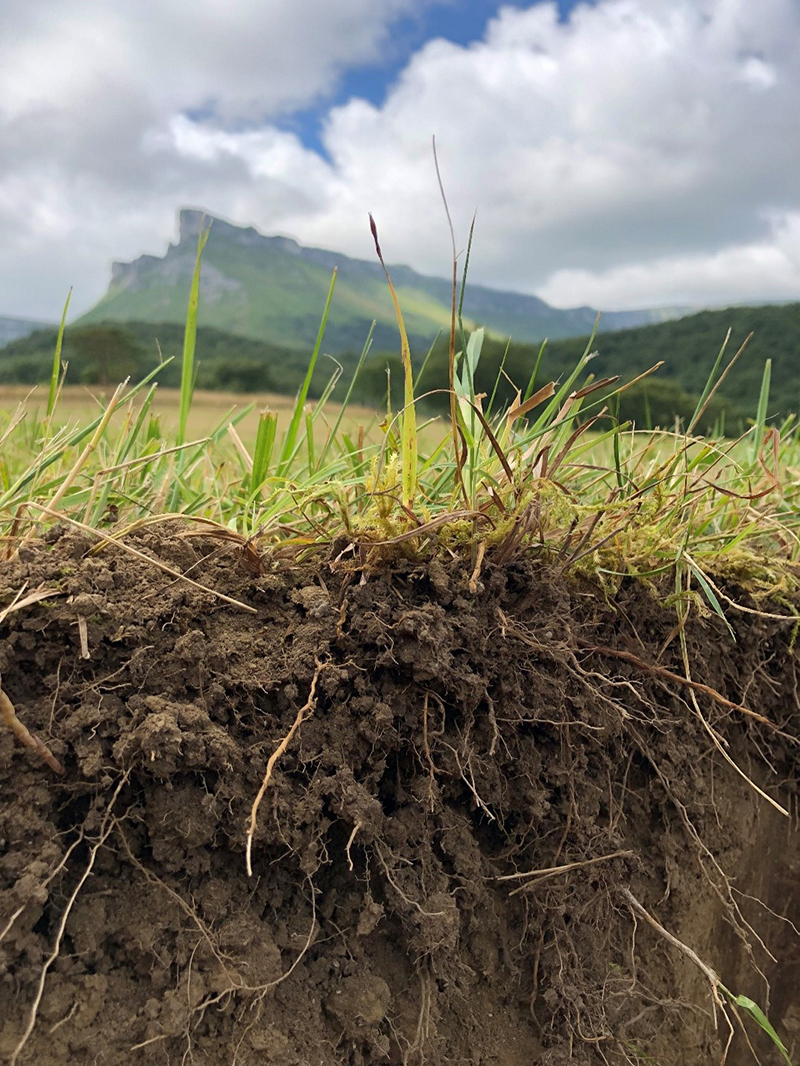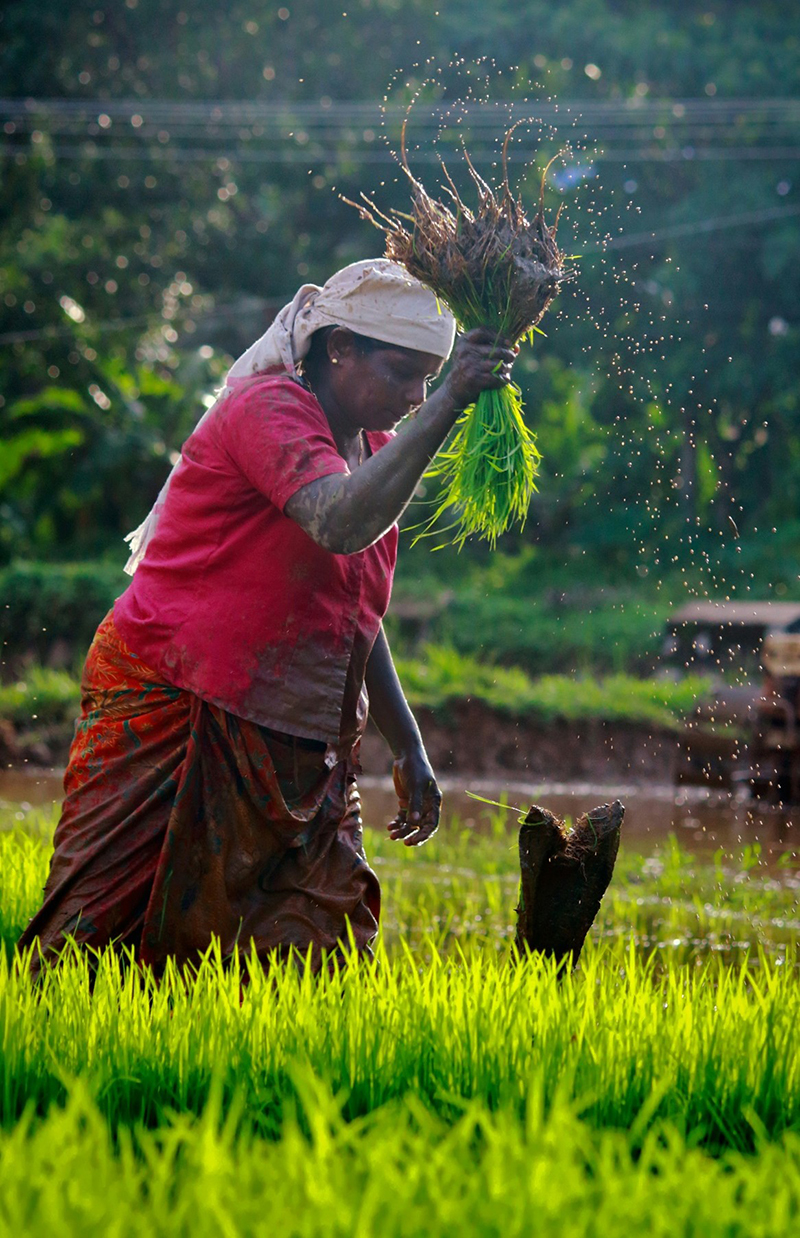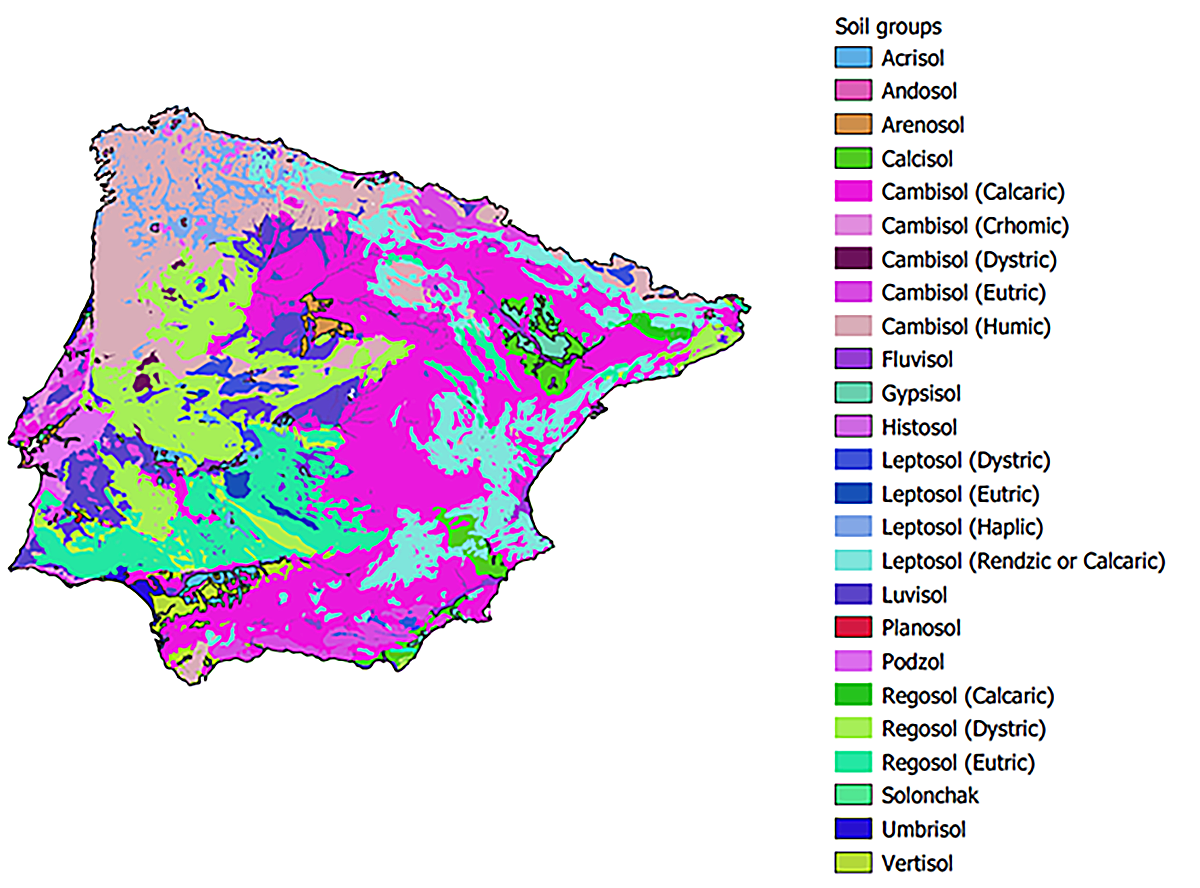SSSA adds two new books to its soil health series
Soil health and sustainability explored in India, Spain, and Portugal

SSSA recently published two new books in its Soil Health and Sustainability Series for India, Spain, and Portugal. CSA News magazine sat down with the editors to talk about land use, environmental challenges, and advocating for the betterment of the extremely diverse ecoregions covered in the two books.
Regions can be united by cultural similarities—language, food, music, and shared customs often bring the people of a country together—but their land, the soil these regions are built on, can differ drastically throughout the terrain. For example, the surrounding ecosystem can change physical, chemical, and biological properties of the ground below. In addition, farming or urbanization can also change soil properties and even introduce new issues, like erosion and industrial pollution.
For this reason, it is extremely difficult to characterize an entire nation’s soil health, challenges, and solutions. Nevertheless, teams of expert researchers have tackled this challenge in two new books published by SSSA as part of its Soil Health and Sustainability Series.
CSA News magazine sat down with the editor of Soil Health and Sustainability in India, Ranjan Bhattacharyya, and the coeditors of Soil Health and Sustainability in Spain and Portugal, Iñigo Virto and Rodrigo Antón, to talk about land use, environmental challenges, and advocating for the betterment of these extremely diverse ecoregions.
This interview has been edited for length and clarity.
CSA News: What is soil health? Why is it important, and how do you measure it?
Bhattacharyya: Soil health refers to the ability of soil to function as a living ecosystem, supporting plant and animal life, regulating water, filtering pollutants, and cycling nutrients.
Soil health is important as it supports food production, reduces runoff and soil erosion, promotes biodiversity, and combats climate change by storing carbon and filtering pollutants. Soil health can be measured by assessing different physical, chemical, and biological properties that indicate how well it can support plant growth and other ecosystem functions.
Virto, Antón: Although the formal definition of soil health has been and continues to be a subject of debate in the scientific community, there is consensus that a healthy soil must be able to fulfill its functions in the (agro)ecosystem in which it is found.
Concern about soil health has also increased significantly in Europe in recent years, to the point where specific and groundbreaking legislation is emerging. One of the challenges of this legislation is how to precisely approach the qualitative and quantitative assessment of soil health. [Our] book offers some frameworks and examples that illustrate different approaches to soil health improvement, depending on many contexts like soil functions and climate.

CSA News: What are some of the major challenges facing agriculture in your region?
Virto, Antón: Iberian agriculture has undergone major changes in recent decades. At the same time, those changes are not consistent throughout the peninsula, as the level of intensification, technological development, or the type of agriculture differs throughout Spain and Portugal. So, it’s not possible to provide a comprehensive answer to this question. But maintaining soil health is undoubtedly one of the main agricultural challenges, as it is in the rest of Europe. Other local challenges are limited water availability, new pests and diseases, and the need to reduce farming’s environmental impact while still contributing to a socially just development in rural areas.
Bhattacharyya: In India, agriculture faces a complex set of interlinked challenges that affect productivity, sustainability, and farmer livelihoods. A major challenge is that farm properties are often small and fragmented, divided into small, scattered plots. Another challenge is that because over 50% of Indian farmland is rain-fed, it is highly vulnerable to erratic rainfall and overextraction of groundwater—especially in Punjab, Haryana, and western India. And of course, soil salinization, nutrient depletion, and erosion reduce soil fertility. On top of it all, farmers have been facing increased costs from seeds, fertilizers, and fuel, but profits are in danger because of increased frequency of pest attacks, crop diseases, and complications from climate change.

CSA News: I have a question for Iñigo and Rodrigo—how can case studies, like the ones used in Soil Health and Sustainability in Spain and Portugal, effectively highlight soil health issues affecting the whole peninsula?
Virto, Antón: The Iberian Peninsula, due to its geography and location, offers a high diversity of landscapes. An essential part of this diversity is the diversity of its soils. For this reason, it is difficult to draw general conclusions about the whole peninsula from specific cases.
Although we are aware that it has not been possible to cover all existing issues, in our book we selected a series of cases that correspond to abundant and representative soil typologies and land uses, to summarize the main soil health issues in Spain and Portugal.
CSA News: Soil Health and Sustainability in Spain and Portugal focuses on soil health in both agrosystems and forests. How do soil health issues differ based on land use?
Virto, Antón: If we consider that soil health should be assessed based on a soil's performance in its intended purpose (i.e., on a farm vs. in a forest), it is clear that different land uses affect soil health differently and have different soil property requirements. Oftentimes there is a relationship between the genetic characteristics of soil and land use. Consequently, both indicators of soil health and soil performance can vary greatly depending on a variety of factors that are highlighted in the examples provided in our book.

The landscape of the Iberian Peninsula is incredibly diverse. According to the World Reference Base, there are 25 soil groups throughout the whole peninsula. Original figure credited to the IUSS Working Group. Own elaboration from ESDAC, ESDB v2.0, 2004.
CSA News: Ranjan, India is also made up of many different regions comprising several different ecosystems. How do the different zones present unique soil health challenges?
Bhattacharyya: India's diverse geography means that different regions face unique soil health challenges, shaped by their climate, topography, vegetation, and land use. Each zone has unique soil health challenges. To name a few, soil erosion due to steep slopes and deforestation is an issue in the Himalayas; arid and semiarid zones face soil salinity and alkalinity due to poor drainage and irrigation; excessive fertilizer use, waterlogging, and salinization strains soils in the Indo-Gangetic Plains; soil acidity troubles forested and tribal regions of central plateau; salinity intrusion from seawater and acid sulfate harms soils in mangrove and estuarine zones of the coastal areas; and Jhum cultivation [a traditional agricultural practice in the northeastern hills where tracts of land are cleared by burning] leads to nutrient depletion.
CSA News: Many soil health issues in India stem from industrial activity—nearby factories, animal processing businesses, and pharmaceutical companies can cause buildup of salt in the soil—beyond negatively impacting the health of the soil, does this have an impact on human health?
Bhattacharyya: Yes. Industrial pollution does not stop at the soil—it travels into our food, water, and bodies. Tackling soil health degradation is therefore also a public health priority. Stricter regulation of industrial waste, improved waste treatment, and public monitoring can help protect both the environment and human health.
Special introductory discount offer: Order before Sept. 9, 2025 with code SHI35 to receive 35% off.
CSA News: All together, these soil health issues can cause the land to degrade. Why is land degradation a concern in India?
Bhattacharyya: Land degradation is a major concern in India because it threatens the country’s ability to sustain its population, economy, and environment. Land degradation in India is not just an environmental issue—it's a human survival issue. It puts food, water, livelihoods, and ecosystems at risk. It is a threat to India’s food security as more than 50% of India’s population depends on agriculture. Degraded land means lower soil fertility, reduced crop yields, and shrinking farm incomes, which can lead to hunger, malnutrition, and rural distress. Land degradation also leaves the land more susceptible to climate shocks like droughts and floods. Degraded land also loses its ability to hold water, leading to water scarcity and poor recharge of groundwater. Degradation destroys habitats, threatening species of plants, insects, birds, and animals. And deforestation, desertification, and soil degradation release stored carbon into the atmosphere contributing to climate change, exacerbating already existing issues.
CSA News: It seems that India isn’t the only region vulnerable to erosion. According to Soil Health and Sustainability in Spain and Portugal, the Iberian Peninsula is one of the most vulnerable regions in Europe to soil degradation. Why is this the case, and how can the knowledge in this book help improve the situation?
Virto, Antón: Due to topographic, climatic, edaphic, and land-use factors, the soils of the Iberian Peninsula are exposed to a series of degradation risks that can be significant in some areas.
Among others, for example, the risk of erosion and the loss of organic matter and biodiversity are top reasons for land degradation. Our book presents some examples of how these challenges can be addressed in specific contexts.
CSA News: What can people do to increase soil health in Spain and Portugal?
Virto, Antón: As in the rest of Europe, Spanish and Portuguese societies are becoming aware of the importance of soil as a component of the natural environment and a resource for many human activities.
As with any other non-renewable resource on a human scale, this awareness must extend to all levels of society and transcend the individual responsibility of direct land users. There are currently numerous programs and legislative proposals that advance in this direction.

CSA News: What can people do to increase soil health in India?
Bhattacharyya: Improving soil health in India is crucial for sustainable agriculture, food security, and environmental protection. Improving soil health in India is a shared responsibility. While farmers are at the forefront, citizens, researchers, and the government all have vital roles. Through sustainable practices, awareness, and supportive policies, India's soils can be revitalized for future generations. For farmers and agricultural communities, adopting practices like conservation agriculture, organic farming, crop rotation and crop diversification, integrated nutrient management, and cover crops and agroforestry can reinvest back into the health of the land. Policymakers should encourage research and innovation in agriculture and allied sectors, incentivize sustainable farming, control land degradation and desertification, and strengthen existing plans like the Soil Health Card Scheme.
Text © . The authors. CC BY-NC-ND 4.0. Except where otherwise noted, images are subject to copyright. Any reuse without express permission from the copyright owner is prohibited.











